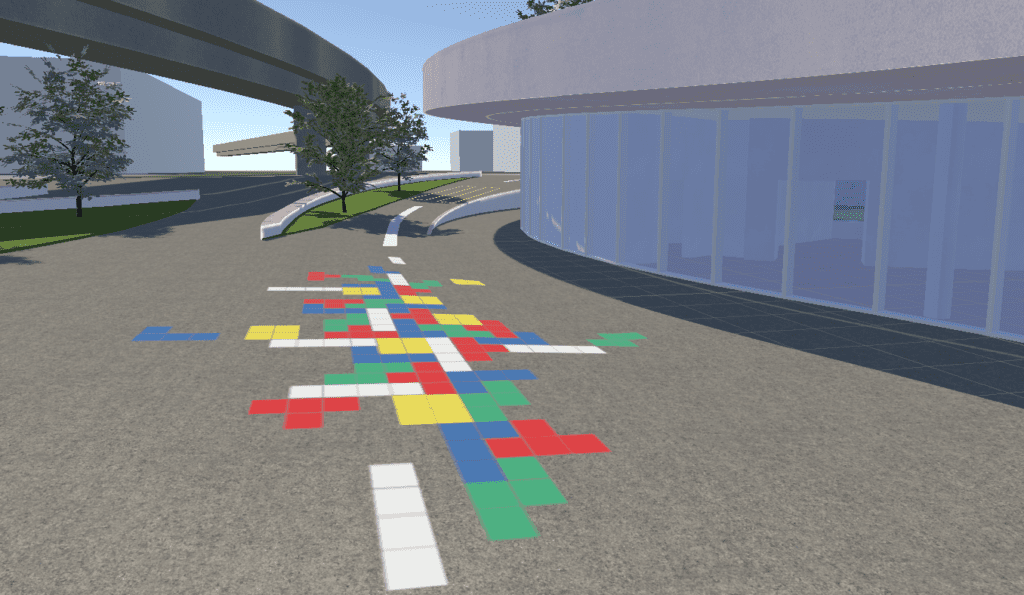Living in a city can sometimes be daunting. From the crowded streets to the noise pollution and the drab grey buildings, cities can take a great toll on our wellbeing. However, a possible solution may lie in colours. According to a new study, introducing bright and green colors into our cities can make people happier and calmer.

Previous studies have shown that the exposition to nature can improve well-being. Trees and plantations and even patches of grass play a big role in restoring positive moods and affective states in cities. However, it’s not always possible to introduce vegetation into urban environments due to low budgets and design constraints.
City designers have then been inspired to use colours to include green patches of colour on building walls and streets, with examples from Berlin to Vancouver. However, the actual effect of this on residents hasn’t been clear. A team of researchers from the University of Lille in France took a closer look at this, using virtual reality simulations.
“Measuring pleasure and motivation in natural settings is difficult,” study author Yvonne Delevoye-Turrell said in a statement. “Human reactions are sensitive to environmental changes, such as weather or traffic, and measurement biases. Consequently, we used virtual reality as a proof of concept to measure reactions.”
VR and colourful cities
Using VR technology, the researchers created an immersive urban environment with either no vegetation or some green vegetation. They also introduced colorful patterns in one of these virtual environment paths. They worked with a group of student volunteers, who walked on the spot in a lab wearing the VR headset with eye trackers.
The researchers tracked the blink rate and walking pace of the volunteers, noting what the participants were more interested in. If they took a look around or slowed their pace, this was a sign they had found something stimulating. Then the researchers asked the volunteers to fill out a questionnaire about their overall experience.
The study confirmed urban vegetation was seen as more pleasant than urban concrete environments. Speed of walking decreased in urban vegetation compared to urban concrete, suggesting green urban settings provide some physiological restoration. No changes were registered in heart rate because of the introduction of green elements.
While the study didn’t find effects of color designs on walking speed, interest and arousal were triggered with colors. Perceived pleasantness was greater with colour designs than without. Also, mean heart rates were greater with colour designs in grey and green urban environments, which shows that colour designs increased physiological arousal.
“Urban planners could use our VR method and use scientifically based visual interventions to encourage citizens to pay attention to ground surfaces, e.g., when a road is under construction or in threat of flooding,” the researchers wrote. “The use of color-design principles could be also powerful to guide popup interventions that would control gaze travel through the city and the woods.”
The study was published in the journal Frontiers in Virtual Reality.









